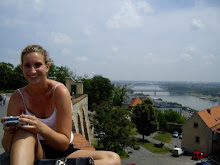
In a process known as the first aerosol indirect effect, enhanced aerosol concentrations cause the droplets in a cloud to be smaller and more numerous within a cloud of fixed water amount. This study found that this process can make the clouds more opaque and emit more thermal energy to the surface.
Consumer Aerosol Products Council
Q: What is being Done About Bad Ozone?
A: The Clean Air Act Amendments of 1990 require states and cities to implement programs to further reduce emissions of ozone precursors from sources such as cars, fuels, industrial facilities and power plants. Power plants will be reducing emissions, cleaner cars and fuels are being developed, many gas stations are using special nozzles at the pumps to recapture gasoline vapors, and vehicle inspection programs are being improved to reduce emissions.
Q: Is There Really a “Hole” in the Ozone Layer?
A: The ozone “hole” is a well-defined, large-scale destruction of the ozone layer over Antarctica that occurs each Antarctic spring. The word "hole" is a misnomer; the hole is really a significant thinning, or reduction in ozone concentrations, which results in the destruction of up to 70% of the ozone normally found over Antarctica.
The science of ozone thinning is complicated. Unlike global ozone depletion, the ozone “hole” occurs only over Antarctica. Since most ozone-depleting substances are released in the northern hemisphere, a common question is why the ozone “hole” occurs over the Antarctic. The first part of the answer is that even though most of these chemicals are heavier than air, regardless of where they're released, they mix throughout the troposphere over about a year, and then mix into the stratosphere in two to five years. The second part of the answer is that although the overall process is similar between global ozone depletion and the ozone “hole”, there are two different types of ozone depletion chemistry.
The first kind is called homogeneous depletion; resulting from reactions as gases mix together, it is responsible for the reduction in global ozone levels. The 5-10% drop in ozone over the US is an example of homogeneous chemistry.
The second kind of ozone depletion chemistry, called heterogeneous, causes the radical destruction of ozone over the Antarctic each spring. It results from reactions on the surfaces of ice particles. The existence of these particles, and the seasonal and geographic location of the “hole,” all result from a combination of meteorological and other effects that are specific to Antarctica at that time of year.
Q: Does Ozone Depletion Cause Global Warming?
A: The greenhouse effect is a natural phenomenon that helps regulate the temperature of Earth. The sun heats the Earth, and clouds and greenhouse gases in the atmosphere trap some of this heat. Although water vapor is the most abundant greenhouse gas, fuel burning and other human activities release greenhouse gases, as well. The most important ones are carbon dioxide, methane and nitrous oxide.
Without any greenhouse gases, the Earth would be uninhabitable. Human activity has increased the level of greenhouse gases in the atmosphere, which may have contributed to the average warming of 1.1 degrees Fahrenheit over the last century.
Although many people confuse ozone depletion and global warming, they are primarily separate problems. While stratospheric ozone is a natural greenhouse gas that helps absorb heat, the ozone hole that has been shown to form over the polar region is not the cause of global warming.
The Argument:
Aerosol creates Ozone depletion. OD describes two distinct, but related observations: a slow, steady decline of about 4 percent per decade in the total amount of ozone in Earth's stratosphere since the late 1970s; and a much larger, but seasonal, decrease in stratospheric ozone over Earth's polar regions during the same period. The latter phenomenon is commonly referred to as the ozone hole.
In addition to this well-known stratospheric ozone depletion, there are also tropospheric ozone depletion events, which occur near the surface in polar regions during spring.

No comments:
Post a Comment